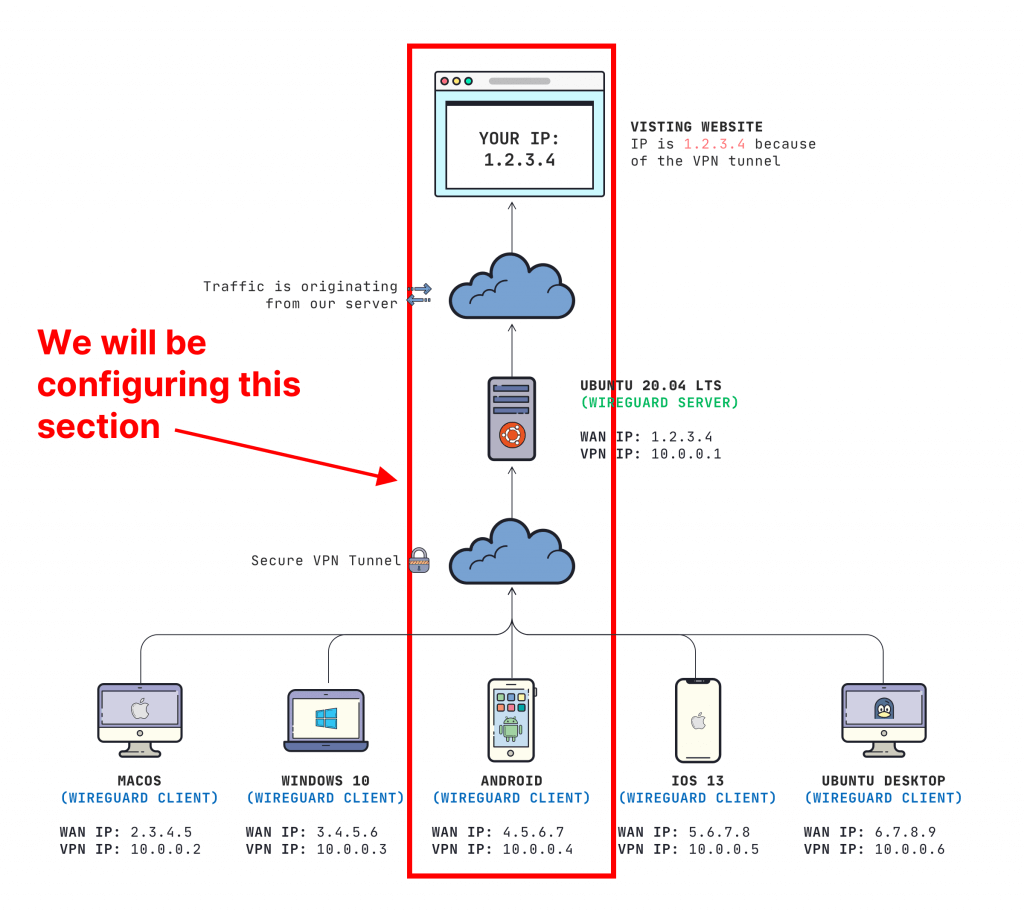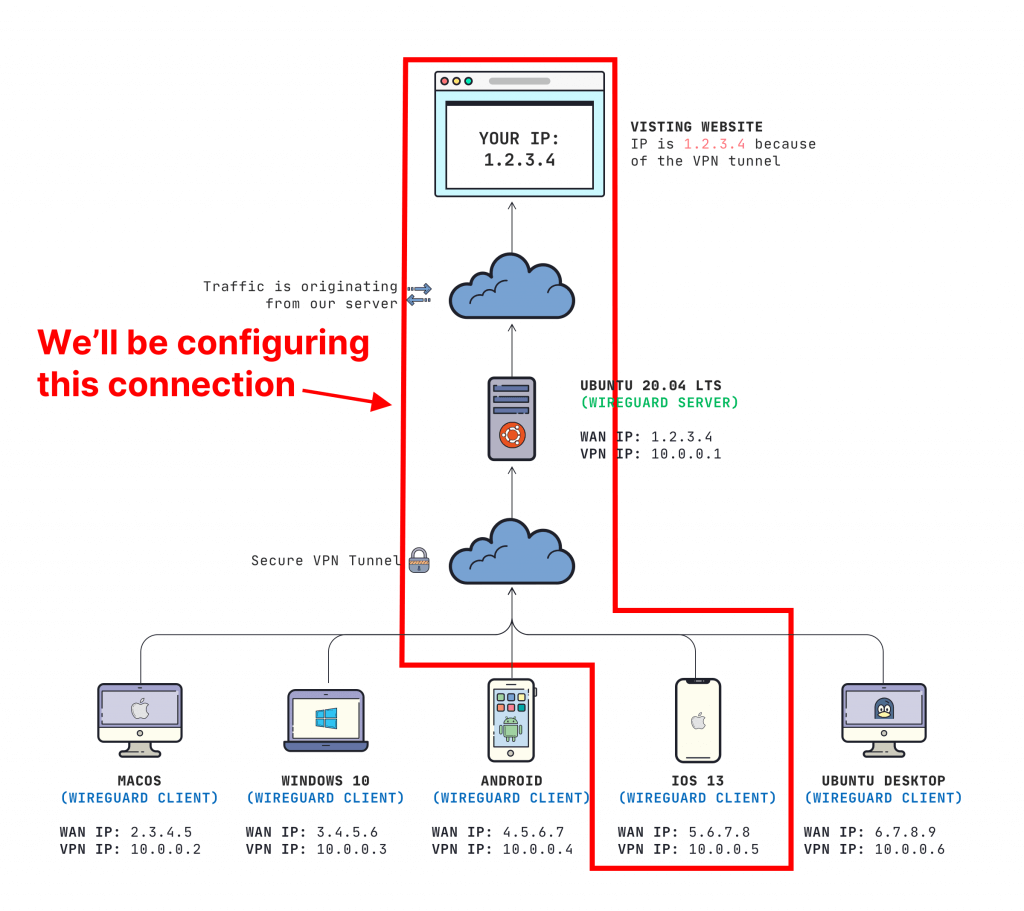In this section of the Gain Flexibility & Increase Privacy with WireGuard VPN mini-course, we are going to be configuring WireGuard VPN on an Android device.
This is what it looks like:

In this section of the Gain Flexibility & Increase Privacy with WireGuard VPN mini-course, we are going to be configuring WireGuard VPN on an Android device.
This is what it looks like:


This is a continuation of my free “mini-course” called Gain Flexibility & Increase Privacy with WireGuard VPN. Start there if you are new to WireGuard.
This is what it looks like:


If you have been following along on my Gain Flexibility & Increase Privacy with WireGuard VPN “mini-course”, you’ll notice that there are a few areas that we need apply configurations in order for our devices to get connected.
Typing all of this in manually on mobile can be a massive pain, especially if you are supporting a remote device for a user.
We can use QR codes to send VPN configuration files out. This is brilliant engineering on WireGuard’s part.
qrencode package installed on your serverInstalling the package is easy. Run this command on your SERVER:
sudo apt install qrencode
I am continuing my “mini-course” on Gain Flexibility & Increase Privacy with WireGuard VPN. If you haven’t seen that, that link is a great place to start. What you’ll achieve We will be connecting our macOS client to send traffic through our Ubuntu 20.04 WireGuard VPN server This is what it looks like: Prerequisites You […]

This post belongs to my “mini-course” on Gain flexibility & increase privacy with WireGuard VPN. I’ll only be walking through how to set up a client for WireGuard on Windows 10. If you don’t have a server (or even if you already have one), definitely start from the top. I make a few assumptions and […]
